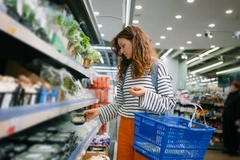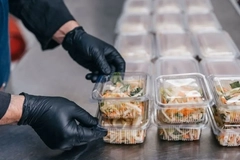Study reveals recycled food pack advantages despite circularity challenges

A recent study has found that recycled PE (rPE) pellets from household flexible food packaging waste show clear environmental advantages over virgin PE (vPE) due to benefits from avoiding end-of-life disposal.
However, the study, published in Recycling by researchers from Ghent University, Belgium, finds that a fully closed-loop system for flexible packaging is not yet feasible. It calls for the integration of design-for-recycling and design-from-recycling solutions in laminate development.
The research utilizes a cradle-to-gate LCA following the Environmental Footprint method to analyze the underexplored environmental impacts of integrating recyclates into food packaging.
Environmental trade-offs
The study conducted two stages of analysis. First, it compared the environmental impact of rPE and vPE pellets using tracer-based sorting and delamination-deinking, a type of purification. Second, it evaluated four multilayer food packaging types — two monomaterial with 34% and 50% rPE and two virgin-based.
In both stages of the study, the researchers point to multiple trade-offs between rPE and vPE and between multimaterial multilayer (MuMu) and monomaterial multilayer (MoMu) packaging types.
For example, despite being more environmentally beneficial, rPE performs worse in freshwater ecotoxicity and mineral-metal resource use due to energy-intensive recycling methods, process inefficiencies, and high residue incineration.
 Household flexible food packaging waste is key feedstock for rPE.For packaging, the study finds that shifting from virgin MuMu to MoMu formats, especially with the addition of recyclates, has environmental benefits.
Household flexible food packaging waste is key feedstock for rPE.For packaging, the study finds that shifting from virgin MuMu to MoMu formats, especially with the addition of recyclates, has environmental benefits.
However, the researchers stress that these environmental benefits are highly dependent on the quality and functionality of the recyclates. Higher recycled content often requires a thicker laminate, which can increase processing challenges and the environmental impacts of packaging.
The study aligns its findings with recent EU regulatory frameworks promoting packaging waste reduction and ecodesign.
Closed-loop system “unfeasible”
The study concludes that a fully closed-loop system for food packaging remains unfeasible due to high material losses during recycling and design challenges to increase mechanically recycled content.
“Even with advanced sorting and purification, recyclate quality degradation persists, resulting in a partially closed loop,” say the researchers.
“Future research, therefore, should prioritize assessing sensitive-contact packaging (including food and non-food) with varying recycled content, and benchmarking advanced technologies, especially chemical recycling, which delivers high-quality recyclates applicable for such applications.”
The study concludes that complementary solutions such as environmental taxation, avoided waste management costs, and eco-incentives can “further accelerate the shift toward sustainable food packaging and circular economy goals.”











